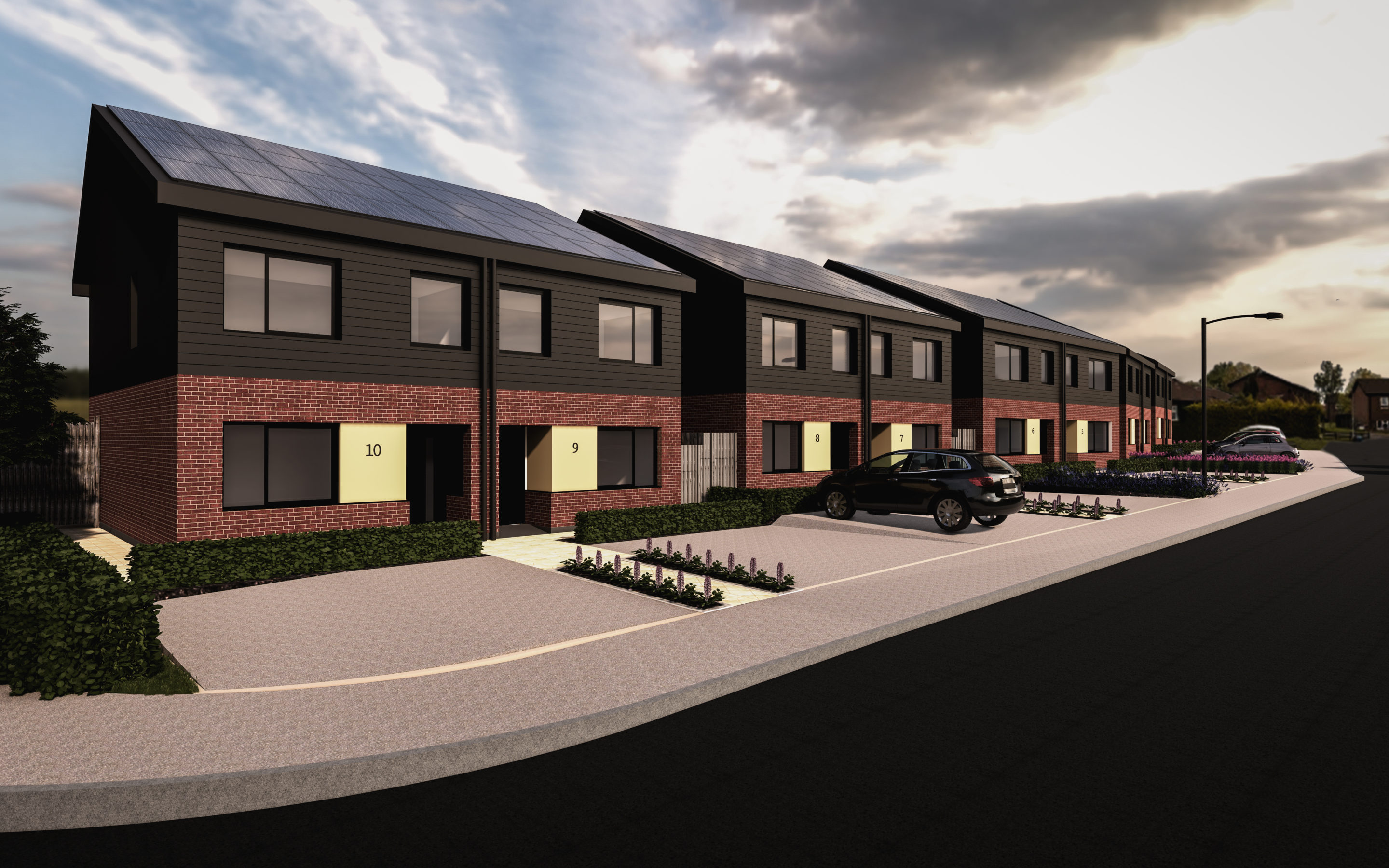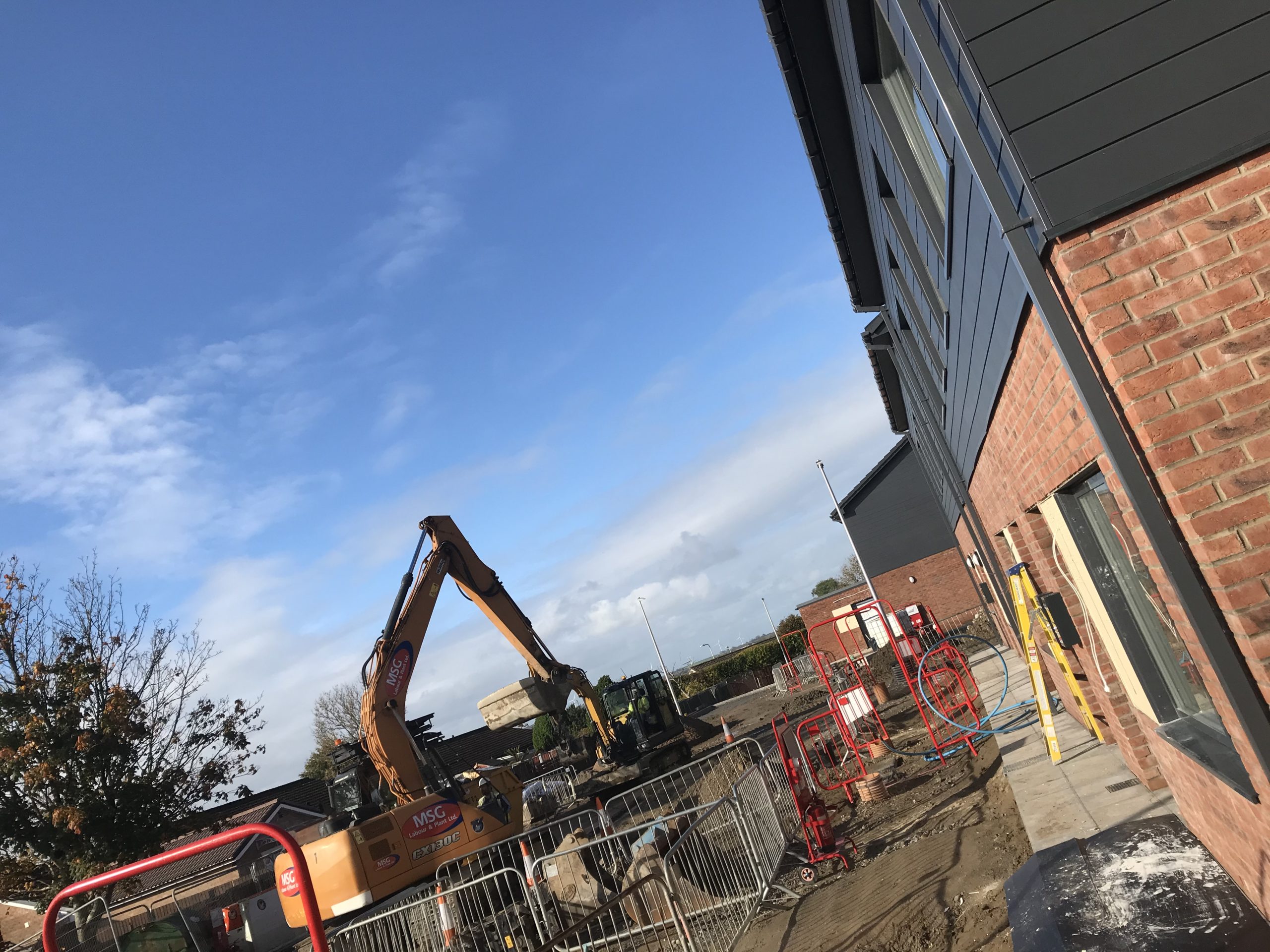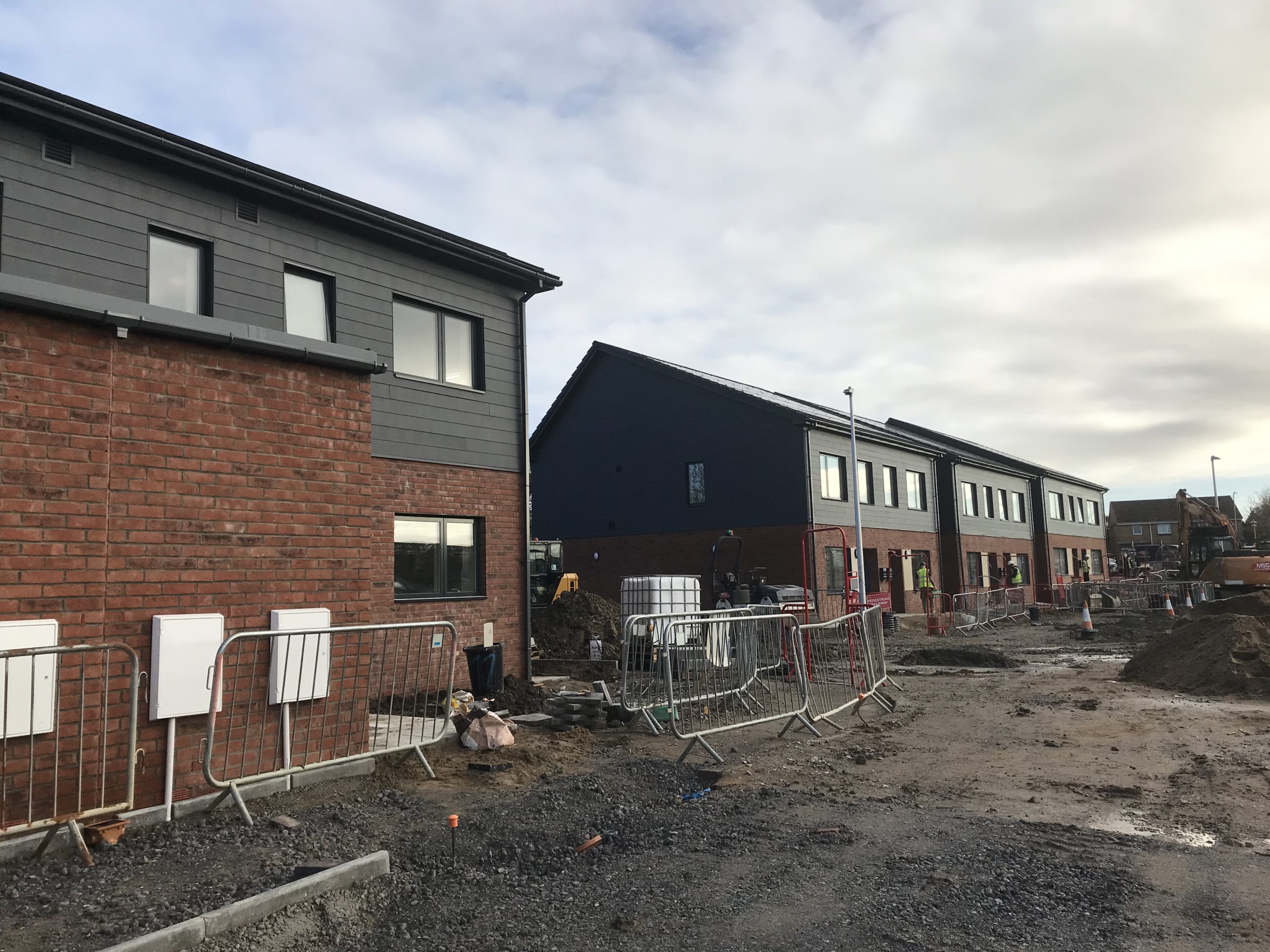Homes of the future in Bridgend
A housing development of 14 eco homes, which are designed to use daylight to provide the majority of their energy, has been completed in Bridgend.
The houses and apartments being developed by Wales & West Housing at Rhiw Cefn Gwlad, Bryn Bragl, Bridgend have been designed to shape the way zero-carbon homes could be built in the future.
They look very much like any other new housing development, except the roofs are made of electricity-generating Photovoltaic (PV) panels and inside there is a Tesla battery to store energy. Instead of gas central heating and radiators, each home is fitted with a state-of-the-art heat pump and ventilation system, which draws in fresh air which is warmed and gently circulated through the house.
By building a highly insulated, warm property and using the latest technologies, the homes will be able to generate their own electricity to run the heating and appliances and save money for residents living in them through lower energy bills.
The houses and apartments are the first of their kind for social rent in Bridgend County Borough Council. They have been part funded under the Welsh Government’s Innovative Housing Programme to develop ways to meet the WG’s zero-carbon target for homes for 2050. When completed the homes are expected to have the highest possible energy efficiency rating of A, compared to the Welsh national average of D.
WWH has worked with partners Zenergy Design to create homes based on the concept of the innovative Solcer House at Stormy Down near Bridgend, which was designed and built by Cardiff University’s Welsh School of Architecture.
WWH’s long-term construction partners Jehu Group are due to complete work on the homes within the next three months.
After they move in, residents will be asked to give feedback on their energy use and bills, comfort levels and the use of the technologies. Throughout the first year other energy performance data will be monitored and findings will be reported back to Welsh Government to continue to expand the delivery of zero carbon homes.
WWH’s Construction Manager Grant Prosser, said: “The challenge for the housing industry is to reach the zero–carbon target by 2050.
“In the past some of the technologies used in the design of zero carbon homes has not been practical or easy to use. With these homes we have worked with our partners to build in low carbon energy generating systems that will be effective but also easy for the residents to use and for us, as landlords, to maintain.
“A lot of our residents on low incomes struggle with increasing energy bills and are living in fuel poverty. The families and individuals moving into these homes can expect a significant drop in their bills.”
“Although these homes are not zero carbon, they are very close. With this development Wales & West Housing is leading the way on how all new homes could be built in the future. The residents who move in will also be able to play an exciting part in shaping homes of the future.”
Key differences
Roofs: The roofs are made from a large panels of photovoltaic cells (PV) which turn daylight into electricity to help power the home.
Walls: These are made from Structured Insulated Panels (SIPS), which are built in factories and contain a thick layer of insulation for higher levels of heat retention.
Windows: Triple-glazed and fitted with air-tight seals to prevent draughts. The south-facing windows are larger than average to provide as much light and heat as possible from the sun.
Heating and hot water: The heating is run by a state-of-the-art- electric air circulating heat pump and ventilation system, which takes the air from outside, warms and filters it before circulating the warm air around the home. Hot water is heated by electricity much of which is generated from the roof panels and stored in a water tank for when it is needed.
Batteries: Each home is fitted with a radiator-sized battery made by electric car manufacturer Tesla. The battery is fitted in a cupboard and stores electricity generated by the PV cells on the roof to use when it is needed, usually in the evenings. When the battery is fully-charged, any extra electricity generated is put back into the National Grid. Residents can check how electricity they have used and how much is left in their battery on a tablet screen fitted in the kitchen.
Related news
Our new home makes such a difference to our family’s life



